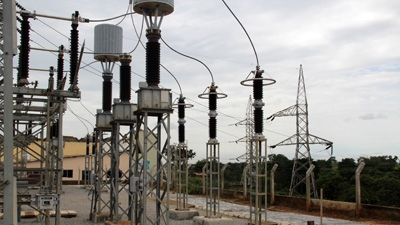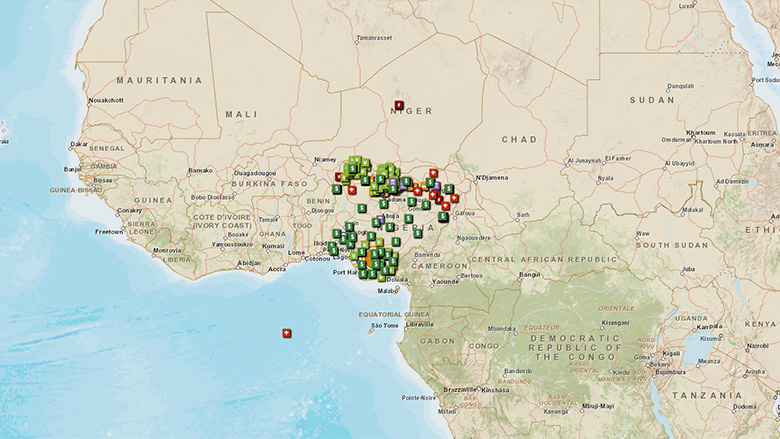Challenge
Nigeria, Africa’s most populous country, suffers from a chronic shortage of energy generation, transmission, and distribution capacity because half of all electricity generated is lost to technical losses and theft. Despite being one of the largest oil producers in the world, 70% of Nigeria’s 160 million people lived below the poverty line in 2010. Energy sector deficiencies kept 55% of the population living without electricity, while those with access suffered poor quality of service. A substantial part of the country was not connected to the grid, and the Power Holding Company of Nigeria (PHCN), formerly known as the National Electric Power Authority (NEPA), suffered from inefficiency, poor maintenance, and under-investment. Lack of metering, outdated information systems, and inconsistent billing practices caused severe revenue losses amounting to over $120 million per year. In 2005, IDA leveraged its long-term engagement in the Nigeria energy sector to launch the NEDP.
Solution
The NEDP targeted enhanced service delivery, an improved environment for non-oil growth, and greater transparency and accountability for governance. The NEDP helped upgrade the transmission system by rehabilitating dilapidated transmission sub-stations, installing equipment in existing sub-stations, and by funding studies for new 330-kilovolt (kV) lines. To improve distribution efficiency, investments were made in line upgrading, distribution transformers, meters, technical assistance, and capacity building. The Commercial Reorientation of the Electricity Sector Toolkit was extended to curb poaching of electricity and raise customer service standards, including high voltage distribution systems, online capacitors and meters, customer service, and a universal billing system. Renewable energy was developed in rural areas, risk mitigation instruments were developed to facilitate privatization, a communications campaign was conducted, and sector institutions were empowered. In Mfaminyen, a seasonally inaccessible village, the NEDP financed the installation of solar photovoltaic (PV) panels for electrification and battery charging, a public community space with an information and communication technology (ICT) business center and television, solar streetlights, and a solar-powered water borehole, demonstrating renewable energy is both feasible and affordable in rural areas.
Results
The project was able to increase the efficiency and improve the supply of electricity, as well as contribute to the development of key institutions and commercial frameworks in the gas and power sector. Some specific results include:
- Over 25,000 new households were connected to the grid and 117,000 consumers and small businesses received new meters
- Approximately 4.4 million electricity consumers in Nigeria, including households, businesses/commercial enterprises, industry, and government, benefited from increased efficiency and quality of electricity delivered
- A new tariff model was developed to include sustainable lifeline provisions to protect the poor
- Rehabilitation of several substations to enhance energy efficiency. Energy received increased by 56% in the Karu cluster in the capital city and sales of electricity by pre-paid meters doubled between the second half of 2011 and the first quarter of 2012.
- High voltage distribution lines were installed in the cluster areas, improving tail end voltage, lowering outage hours, and making theft more difficult
- Approximately 8,100 meters of grid were installed in rural areas, connecting 24,600 households in 40 communities across Nigeria. Electrification was also extended to commercial farms in the Kaduna State, improving productivity and competitiveness.
- Four off-grid pilots installed more than 45 solar home systems, 17 solar street lights, and two solar water pumps to promote the commercial activities of the user groups, demonstrating that renewable energy is both feasible and affordable in rural areas
Bank Group Contribution
When the NEDP was approved, IDA had a long-standing relationship with PHCN/NEPA and staff with experience to address reforms, utility management engineering, regulation, strategic communications, and commercialization of utilities. IDA contributed a total of US$172 million to the project, of which US$54 million was spent on transmission system development, $92 million on distribution efficiency enhancement, US$7 million on access expansion and renewables, US$6 million on technical assistance for the project management unit, and US$4 million on technical assistance for reform and private participation.
Partners
The Global Environment Fund provided a US$1 million grant in order to expand the use of renewable energy technologies by facilitating grid-connected and off-grid renewable energy sources.
Moving Forward
The Nigeria Electricity and Gas Improvement Project (NEGIP) and the Power Sector Guarantees Project (PSGP) will succeed the NEDP to continue the dialogue on sector reform while supporting power generation, gas sector policies, and regulation. The NEGIP consists of a $200 million credit and a US$400 million Partial Risk Guarantee aimed to mitigate risk by increasing gas supplies to public sector power plants, enhancing transmission and distribution infrastructure, and providing technical advisor services for logistical support and to sustain ongoing reforms. The PSPG will focus on supporting a set of independent power plants being developed by the private sector.
Beneficiaries
Simon’s photography business in Karu is enjoying its highest levels of productivity with a near-constant power supply. In Karu and Nyanya, another intervention cluster, women in particular appreciate the ability to refrigerate perishable foods and parents are pleased that their children have more outlets for education, entertainment, and air conditioning, while businesses have used savings on generator fuel to expand operating capital. One Nyanya resident remarked, “I’m just happy seeing light. Light is just a source of happiness, I guess for everybody.”

